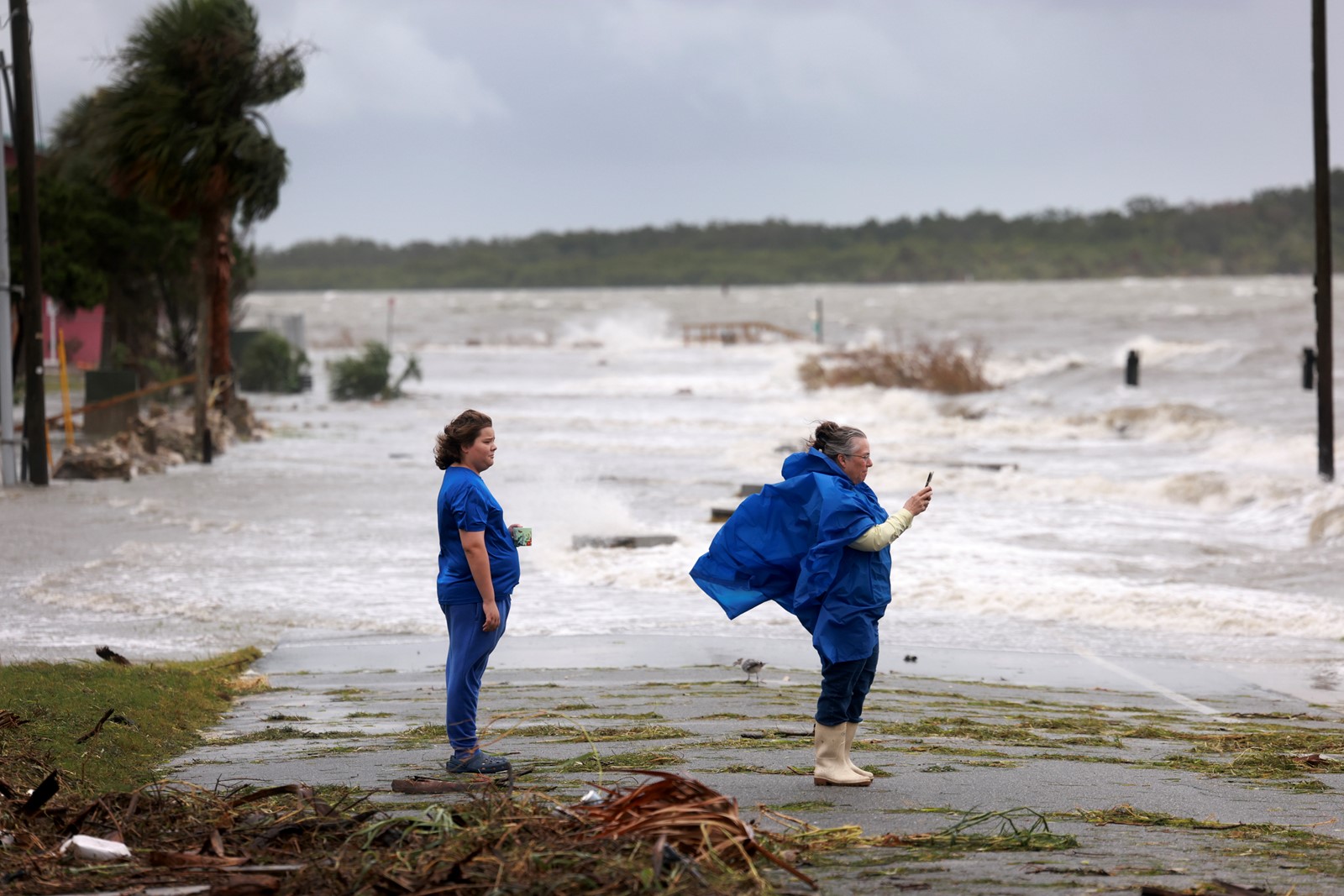
HORSESHOE BEACH, Fla. — Tropical Storm Debby reached Florida’s gulf coast early Monday as a Category 1 hurricane, bringing with it the potential for catastrophic flooding as it slowly passes over the northern part of the state. It was later downgraded to a tropical storm, but forecasters warned that record-setting rain could pummel coastal Georgia and South Carolina in the coming days as the system heads east.
Up to 30 inches of rain was possible in some areas, the National Hurricane Center said. The potential for high water threatened Savannah, Georgia; and Charleston, South Carolina. Up to 18 inches was forecast in central and north Florida.
Savananah had a curfew from 10 p.m. Monday until 6 a.m. Tuesday.
The storm made landfall near Steinhatchee, a tiny northern community of less than 1,000 residents. The storm came ashore in one of the least populated areas of Florida, but forecasters warned that heavy rain could spawn dangerous flooding.
Looking out over the Steinhatchee River from the condo above the marina he operates, Chris Williams said he was feeling blessed that the damage wasn’t worse.
His power went out around 5:30 a.m. as the storm was washing ashore, jamming the dock-studded riverfront with tree debris and barrels.
The town where Hurricane Debby made landfall is 20 miles from where Hurricane Idalia crashed ashore Aug. 30, 2023.
“Two in less than a year is pretty bad,” Williams said. “You do everything you can possibly do to prepare. And when you’ve done that, clean up and put it back together and move forward.”
“That part of the coast is a very vulnerable spot,” said John Cangialosi, a hurricane specialist with the National Hurricane Center. Some areas have already received 10 to 12 inches of rain.
More than 350,000 customers were without power in Florida and Georgia by midday Monday, according to the site PowerOutage.us and Georgia Electric Membership Corp.
Florida Gov. Ron DeSantis said 17,000 workers are trying to restore electricity. He warned residents in affected areas to sit tight until conditions are safe.
The governor declared a state of emergency last week to most of the state’s counties, and President Joe Biden approved the Federal Emergency Management Agency to coordinate all disaster relief efforts.
The Florida National Guard has 3,000 service members set for response efforts along with the Florida State Guard, Florida Fish and Wildlife Conservation Commission, and county emergency response personnel with an arsenal of high-water vehicles and other emergency response equipment.
It’s the fourth hurricane to hit Florida in August since 2000: Charley in 2004, Katrina in 2005 and Idalia.
A truck driver died early Monday after he lost control of his tractor trailer and crashed into a concrete wall along a wet Interstate 75 in the Tampa area.
East of Steinhatchee, a 38-year-old woman and a 12-year-old boy were killed late Sunday when the car she was driving on a wet road struck a median and overturned off the road. A 14-year-old boy who was a passenger was hospitalized with serious injuries, according to the Florida Highway Patrol.
A 13-year-old boy died Monday after a tree fell on a mobile home southwest of Gainesville, the Levy County Sheriff’s Office said.
Debby weakened into a tropical storm late Monday morning, with top winds hovering around 70 mph. The storm was moving slowly to the north-northeast and was expected to decrease in speed as it turns to the east, forecasters said.
In Savannah, Georgia, local leaders said flooding could happen in areas that don’t usually get high water if Debby stalls out over the city.
“This type of rain hovering over us, coming with the intensity that they tell us it is coming, it’s going to catch a whole lot of people by surprise,” Chatham County Board Chairman Chester Ellis said.
In South Carolina, the city of Charleston has an emergency plan in place that includes sandbags for residents, opening parking garages so residents can park their cars above floodwaters and an online mapping system that shows which roads are closed by flooding.
North Carolina and South Carolina have dealt with three catastrophic floods from tropical systems in the past nine years, all causing more than $1 billion in damage.
In 2015, rains fed by moisture as Hurricane Joaquin passed well offshore caused massive flooding that nearly knocked Columbia’s water system offline.
In 2016, flooding from Hurricane Matthew caused 24 deaths in the two states, and rivers set record crests. Those records were broken in 2018 with Hurricane Florence, which set rainfall records in both states, flooded many of the same places and was responsible for 42 deaths in North Carolina and nine in South Carolina.
In Savannah, Jim Froncak piled sandbags into his pickup Monday as rain was falling. He said a recent storm caused so much flooding that he and a friend were able to kayak down a street.
“That was just a thunderstorm,” he said. “So, who knows what could happen with this?”
Tropical Storm Debby became the fourth official system of the 2024 Atlantic hurricane season. The others were Tropical Storm Alberto, Hurricane Beryl and Tropical Storm Chris.
Orlando Sentinel contributed.


 PREVIOUS ARTICLE
PREVIOUS ARTICLE
